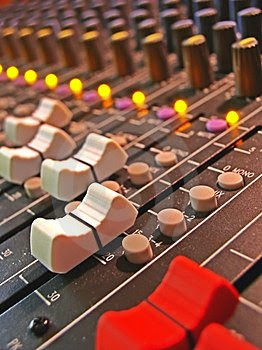 There's no doubt that software has made working with sampled breaks in your music easier than ever. There's no more worrying about getting breaks in sync, no more worrying about time-stretching the proper amount, or any of the other garbage that used to be required when sampling was still in its infancy. One problem that has remained, however, is that a break is a single entity on a single track - meaning that if you want to apply compression, EQ, or effects, you have to do it to the entire break. Or do you?
There's no doubt that software has made working with sampled breaks in your music easier than ever. There's no more worrying about getting breaks in sync, no more worrying about time-stretching the proper amount, or any of the other garbage that used to be required when sampling was still in its infancy. One problem that has remained, however, is that a break is a single entity on a single track - meaning that if you want to apply compression, EQ, or effects, you have to do it to the entire break. Or do you?Normally, when you're producing real or MIDI drums, you can record each instrument on its own track so they can each be effected individually without effecting the other parts. You might want to put some reverb on your snare, but you don't want it on your hats or your kick. Or maybe you want to boost the low end of your kick, but that ends up making your snare sound boxy and unnatural. If you've got a program like Propellerheads' Recycle (and if you're working with breakbeats, you probably ought to be), the solution is actually quite simple. Here's how to do it:
1. Prepare your breakbeat in Recycle, making sure all the slice points are nice and tight and where they should be. Save it as a REX file and be sure to use the EXPORT command to create the corresponding MIDI file to trigger the slices in your DAW of choice.
2. Bring the REX file into whatever sampling or looping instrument you prefer. I like Spectrasonics Stylus RMX. For the sake of simplicity, I'm going to describe this process on a simple beat consisting of kick, snare, and hi-hat parts. Obviously, more complex arrangements just require an expanded version of this same technique.
3. Duplicate the instrument track your sampler or loop player is on so that you have 3 tracks, all corresponding to the same sampler or loop player. Next, make 3 copies of your beat's MIDI file, moving one to each of the 3 tracks you just created.
4. Open up whatever you DAW's grid editor is on the first track and find all the notes that trigger kick slices. Delete everything else. Repeat the process with the next track, but this time delete everything except the hi-hat part. Finally, move to your third track and remove everything that isn't a snare.
5. You can now record each part on its own audio track where it can be given its own compression, EQ, and effects settings just as if you had recorded a real drum kit.
Obviously, there are going to be instances where multiple parts are playing at the same time (a closed hat and kick hitting at the same time). Don't worry about this. Just separate the parts our as best you can, and you will have a lot more flexibility to properly produce the loop and although it might not be perfect, it'll sound a lot better than it would if you just tried to produce the loop as a single part.
Want to get really crazy? Give each slice its own track and effects settings for extremely intricate special effects!




















2 comments:
Hello Tom,
Nice MIDI bouncing soluiton. Since Live 7 you can use Slice Loop to Midi option in context menu when hovering over a "warped" loop then you can take this and seperate the individual (MIDI) parts, like you mention, however bounce the resulting audio tracks directly back to live (from within Live) in a matter of seconds and toss the seperate loops into individual tracks for mixing fx. A step further is that you can toss those new loops into the new "Drum Racks" instrument and have some real fun using audio chains, etc. (e.g. mix everything right there inside Live's drum rack instrument). God I love this software. Worth every red cent. New warping modes in ver.8 are damned sweet too. Have fun.
oh did i mention Live reads REX now too, straight from the Live browser. even previewable. ;P
Post a Comment